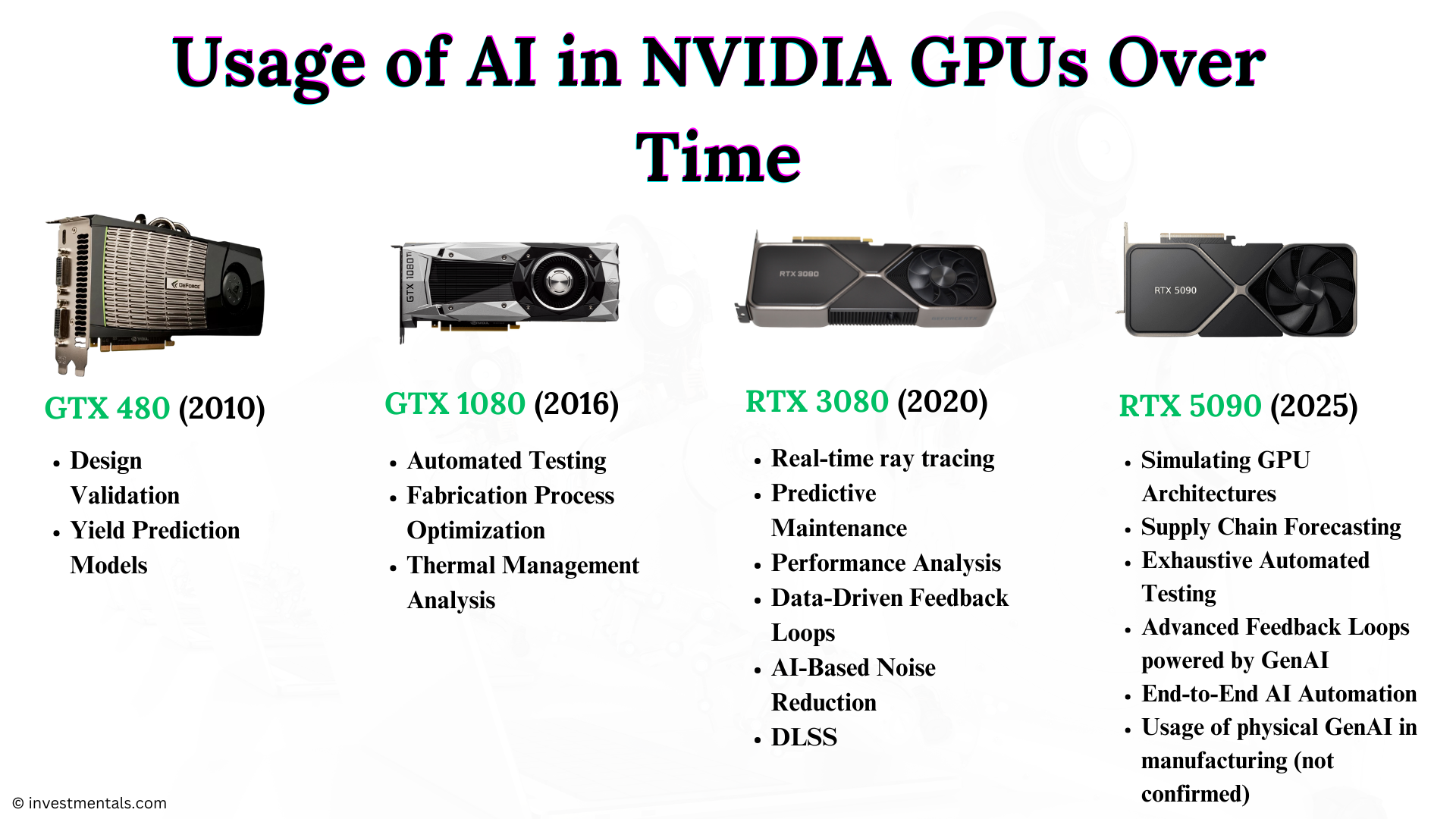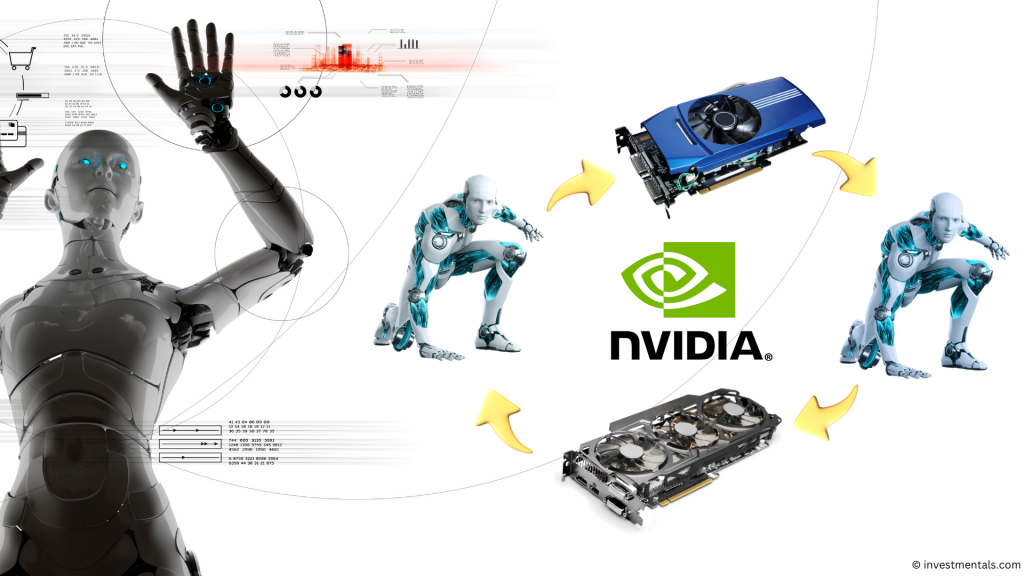Is AI taking over the world? Well, Nvidia is.
Since its founding in 1993, Nvidia has transformed from a company focused on video game graphics into a central player in the AI revolution. As of 2024, Nvidia dominates the AI hardware market, with its GPUs powering everything from generative AI models to advanced language processing systems.
The turning point in Nvidia’s journey toward AI prominence came in 2006 with the release of its CUDA (Compute Unified Device Architecture) platform. CUDA allowed developers to harness the GPUs’ parallel processing power for general-purpose computing, not just graphics. This innovation established Nvidia’s early recognition of AI’s potential. Over time, CUDA cemented the company’s influence, as its widespread adoption in academic and industrial settings made sure that researchers and developers built AI applications optimized specifically for Nvidia hardware.
In recent times, the addition of tensor cores in more recent GPU generations has accelerated AI workloads, which has enabled breakthrough advancements in neural networks and deep learning. Nvidia’s strategic foresight and investment in AI-specific hardware have not only kept it ahead of the curve but have also made its technology foundational to healthcare, self-driving cars, and many other multi-billion-dollar industries already.
Nvidia Clara platform, for instance, supports AI workflows in medical imaging and drug discovery. Similarly, Nvidia’s investment in self-driving technologies, centered around its Nvidia DRIVE platform, provides AI-based computing for autonomous cars. The multi-trillion-dollar company enables vehicles to process vast amounts of sensor data in real-time through the development of high-performance hardware and software, such as the Orin and Xavier systems-on-chips (SoCs).
In 2016, we saw the beginning of the first generative AI hype, which really took off after the introduction of Generative Adversarial Networks in 2014. Around the same time, the media started buzzing about Sam Altman’s (and Elon Musk’s) OpenAI and its mission to set artificial intelligence free. Recognizing the role of GPUs in AI development, the market pushed NVIDIA’s stock to an enormous surge of 224% in 2016.
The backbone of Nvidia’s meteoric rise we’re witnessing right now, however, lies in the reinforcing cycle between its GPUs and the AI revolution.
It’s no secret that as AI technologies continue to disrupt industries worldwide, Nvidia’s hardware has increasingly become the core of this transformation. From healthcare and finance to automotive and cybersecurity, sectors across the globe now rely on AI-powered deep learning and data analysis, which, in turn, depend on Nvidia’s high-performance chips.
The scarcity of these chips, particularly Nvidia’s H100 and H200 models, has made them indispensable; this has fueled Nvidia’s meteoric rise in value by over 15 times since 2020. Some experts now speculate whether Nvidia’s near-monopolistic control over AI infrastructure is cultivating a global economic takeover.
While GPUs are essential for AI training and development, it really gets much more concerning when you reflect upon the increasing usage of AI in manufacturing of GPUs.

In GPU production, AI can enhance everything from quality control to supply chain logistics, helping Nvidia scale up its operations more efficiently.
From an economic perspective, Nvidia’s manufacturing prowess exemplifies the implications of economies of scale taken to another level. It competently reduces the per-unit costs of GPUs when Nvidia ramps up its AI-driven production capabilities. This isn’t just a traditional application of economies of scale; Nvidia is utilizing AI to optimize every facet of its manufacturing process—from supply chain logistics to quality control—also resulting in unprecedented efficiency.
This aggressive scaling leads to lower costs, which can, among many things, be reinvested into the company to further innovate and expand its product line. In a way, Nvidia is indeed redefining the economics of scale; they are not merely increasing output but also enhancing the quality and sophistication of the output itself.
The Concerning Feedback Loop
Nvidia’s AI-driven manufacturing represents a feedback loop: GPUs are critical for AI, and AI is now critical for making GPUs. As AI models become more complex and demanding, they require more powerful and specialized hardware. Nvidia’s AI-assisted manufacturing not only speeds up the production of these increasingly powerful GPUs but also makes the process more adaptive and scalable.
This self-reinforcing loop could lead to even faster advancements in AI, which in turn creates a demand for even more advanced GPUs. The relationship between hardware and software has always been interdependent, but the introduction of AI into this process amplifies it in ways we’ve never seen before. Nvidia (or its AI) is essentially creating the tools that will enable the next generation of AI systems, which will then drive the demand for even better tools.

In essence, Nvidia is creating the very hardware that will fuel the next generation of technological advancements—essentially controlling both the supply and the demand for the future of AI. We’re watching AI evolve into a self-sustaining force, one that’s not only optimizing its own tools but also accelerating its own capabilities. The more powerful GPUs get, the smarter AI becomes, and the smarter AI becomes, the better it gets at producing even more powerful GPUs. It’s an escalating cycle that’s hard to predict and even harder to control. The question is, at what point does this spiral start making decisions or developments that go beyond human oversight?
The risk here isn’t AI running wild; it’s Nvidia becoming too powerful, with the potential to steer the world’s most crucial technologies—and by extension, the world itself.








